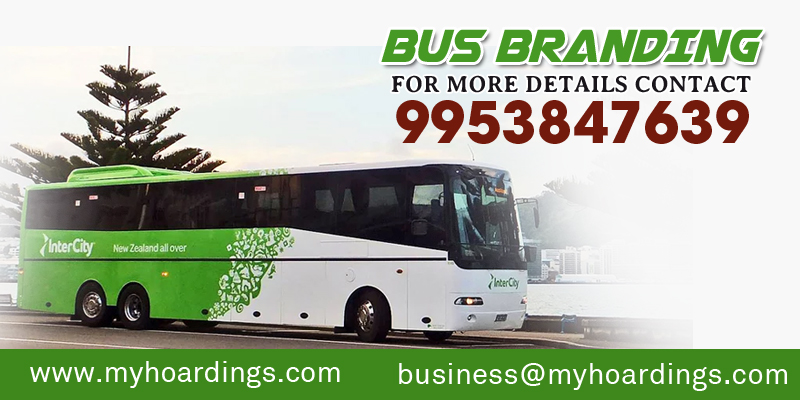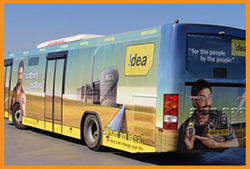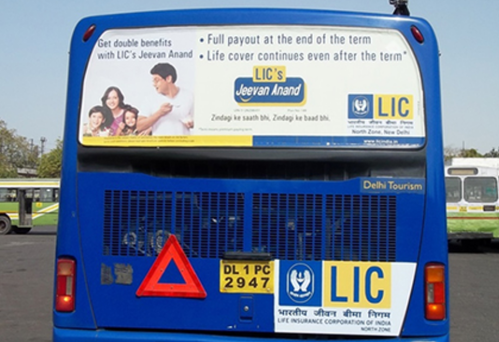How Do You Advertise on a Bus?
Advertising on buses is a highly effective way to reach a wide and diverse audience. Bus advertising offers extensive visibility and the opportunity to make a significant impact in urban areas. As an ad agency, MyHoardings has extensive experience in executing successful bus advertising campaigns. Here’s a comprehensive guide on how to advertise on a bus.
1. Understand the Types of Bus Advertising
There are several types of bus advertising, each offering unique benefits:
- Bus Wraps: Full or partial wraps that cover the bus with your advertisement.
- King and Queen Panels: Large ads on the sides of the bus.
- Tail Ads: Advertisements placed on the back of the bus.
- Interior Cards: Ads placed inside the bus, above the seats or near the ceiling.

2. Define Your Advertising Goals
Identify the objectives of your bus advertising campaign. These could include:
- Increasing brand awareness
- Promoting a specific product or service
- Driving traffic to your website or physical location
- Boosting sales during a particular season or event
3. Choose Your Target Audience
Consider the demographics and behavior of your target audience. Bus routes often pass through various neighborhoods and business districts, allowing you to target:
- Commuters
- Shoppers
- Tourists
- Students
4. Design an Eye-Catching Advertisement
The design of your bus advertisement is crucial for capturing attention. Follow these tips:
- Bold Colors: Use bright and contrasting colors to make your ad stand out.
- Clear Messaging: Keep your message concise and easy to read. Use large fonts and minimal text.
- High-Quality Images: Incorporate high-resolution images that are visually appealing.
- Brand Consistency: Ensure your ad aligns with your brand’s identity and includes your logo.

5. Select the Right Bus Routes
Choose bus routes that align with your target audience’s travel patterns. Consider the following:
- High-traffic routes in busy urban areas
- Routes that pass by key landmarks or shopping districts
- Routes that service areas where your target demographic lives or works
6. Determine the Duration of Your Campaign
Decide how long you want your bus advertisements to run. Longer campaigns can reinforce your message, while shorter campaigns might be ideal for time-sensitive promotions.
7. Comply with Advertising Regulations
Ensure that your advertisement complies with local regulations and the advertising guidelines of the bus service. This includes:
- Ad content restrictions
- Size and placement limitations
- Approval processes
8. Monitor and Measure Your Campaign
Track the effectiveness of your bus advertising campaign. Key performance indicators (KPIs) to monitor include:
- Reach and impressions
- Website traffic (if a URL is included)
- In-store visits or sales increases
- Social media engagement
9. Work with a Professional Advertising Agency
Partnering with an experienced advertising agency like MyHoardings can simplify the process and ensure a successful campaign. We provide end-to-end services, including design, media buying, and campaign management.
Conclusion
Advertising on a bus is a powerful way to reach a large and varied audience, making it an ideal choice for brands looking to increase visibility and engagement. By understanding the types of bus advertising, defining your goals, designing compelling ads, and selecting the right routes, you can create an impactful bus advertising campaign. Contact MyHoardings today to learn how we can help you maximize the potential of bus advertising for your brand.
Brand promotion at Residential Societies
-
1
Static Posters inside Lifts
-
2
Standee and BTL Activation
-
3
Ads on Notice Boards
-
4
DOOH Displays in Lift Lobby Areas




